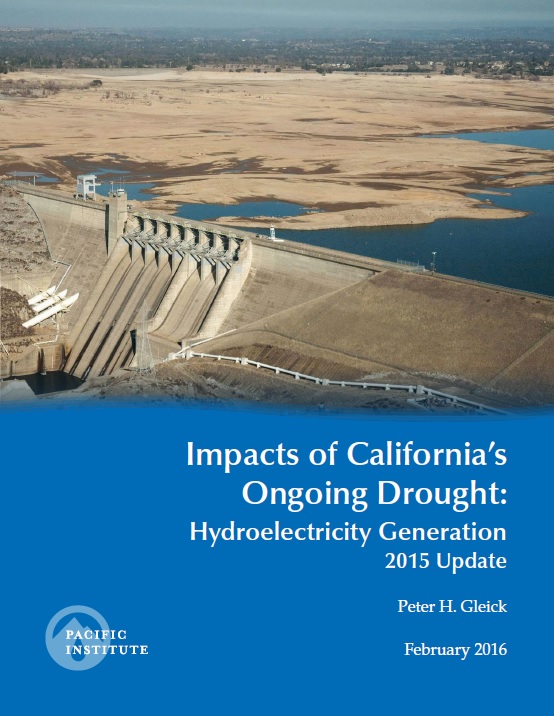Impacts of California’s Ongoing Drought: Hydroelectricity Generation 2015 Update

Impacts of California’s Ongoing Drought: Hydroelectricity Generation 2015 Update
Hydropower and natural gas are the principal sources of electricity for California’s millions of users. But California’s hottest and driest drought in recorded history, from 2012 to 2016, shifted the sources of energy for electricity with adverse economic and environmental consequences. The prolonged period of extreme drought reduced the river flows powering hundreds of hydropower stations in the state. Natural gas replaced the lost hydroelectricity, at high cost to both consumers and the environment. This report is a comprehensive assessment of the costs to California of lost hydroelectricity during the four years of drought from October 2011 to the end of September 2015 (the official California “water year” runs from October 1 to September 30).
Appendix 1A: Data Sources for Section 1: Drought and Domestic Water Shortages Appendix 1B: Spreadsheet: Drought-Impacted Public Water Systems Appendix 1C: Spreadsheet: State Reports of Household Outages, Aug 8 2016 Appendix 2A: Spreadsheet: Drought Charges Appendix 2B: Spreadsheet: Affordability Analysis Appendix 3A: Tribal Salmon Fishery Data Website: California Drought
Overview
Key Findings
Resources
In this Series

